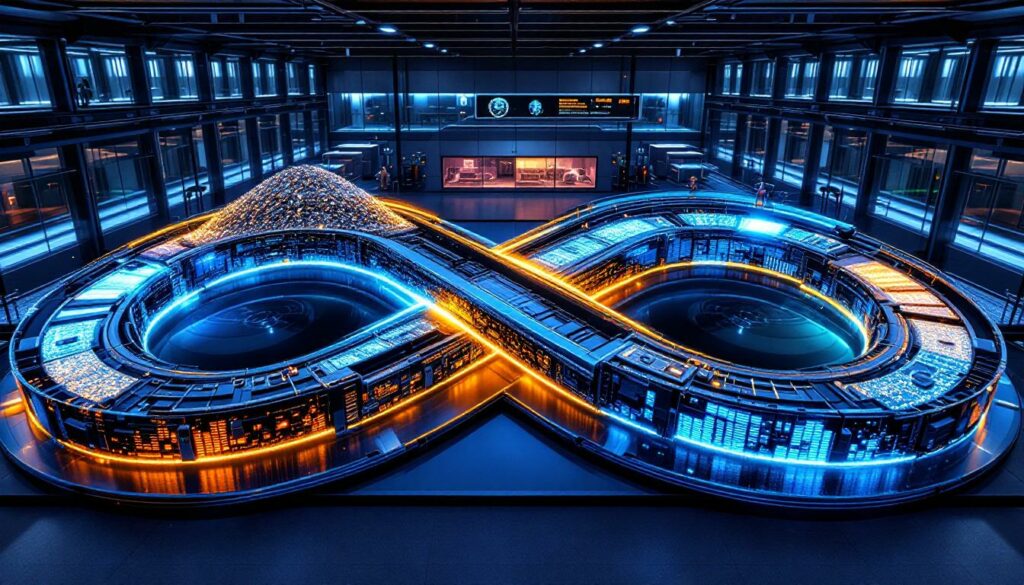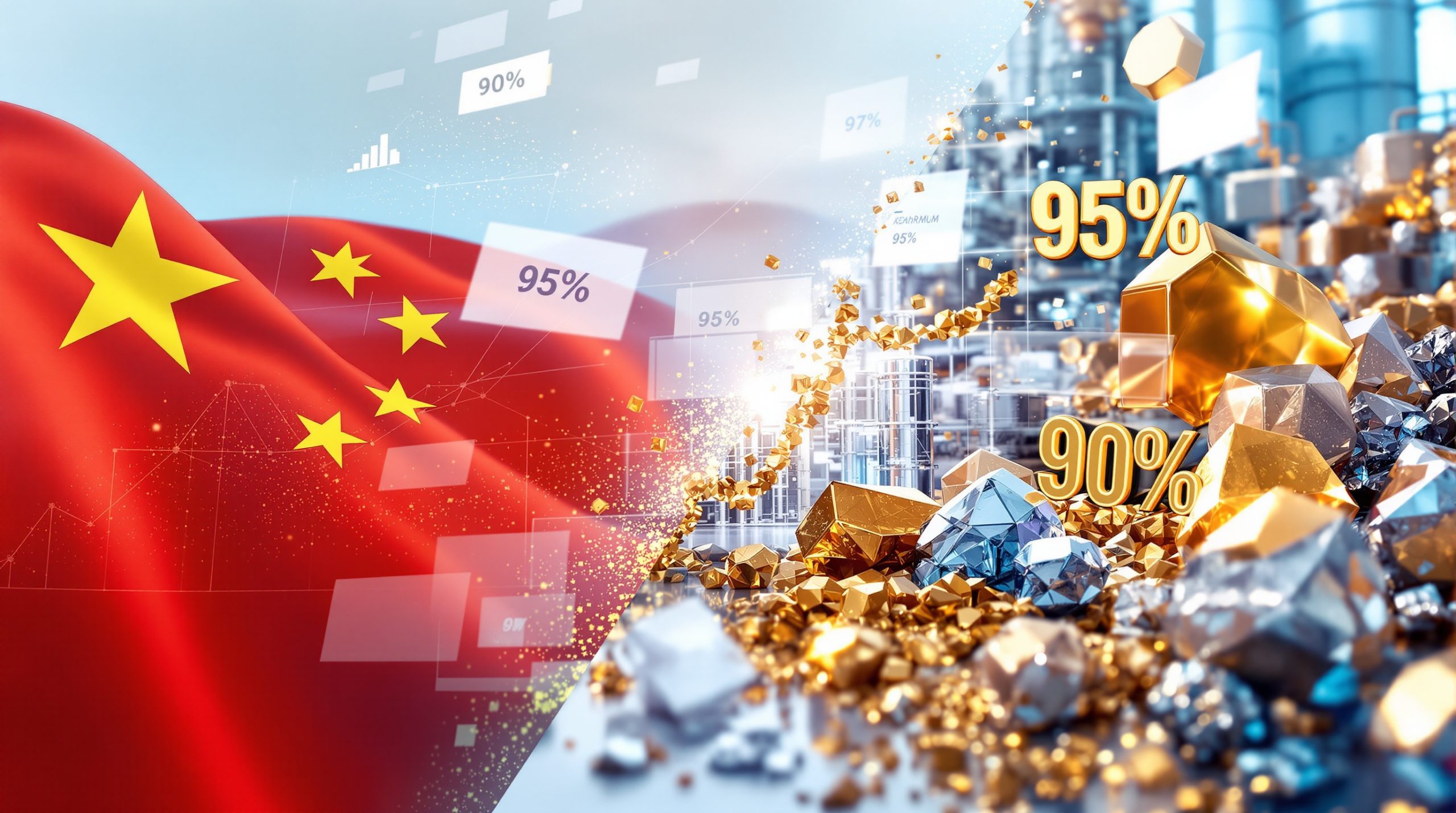How Is BASF Revolutionizing Battery Recycling in Germany?
As the electric vehicle revolution accelerates across Europe, BASF has positioned itself at the forefront of sustainable battery technology with its groundbreaking recycling facility in Schwarzheide, Germany. This facility represents a significant milestone in the company's commitment to creating a circular economy for battery materials and securing Europe's position in the global battery supply chain.
The Evolution of Battery Recycling in Europe
The European battery landscape is undergoing a profound transformation. With electric vehicle adoption surging across the continent, the need for sustainable end-of-life battery solutions has never been more critical. By 2030, experts project that over 7 million tonnes of lithium-ion batteries will reach end-of-life status globally, creating both an environmental challenge and a strategic resource opportunity.
The EU Battery Regulation, implemented in phases between 2023 and 2027, has created a structured framework driving innovation in the recycling sector. These regulations mandate ambitious recovery targets for critical materials—requiring 70% lithium recovery by 2030, along with 95% for cobalt, nickel, and copper. These stringent requirements have catalyzed unprecedented investment in advanced battery recycling breakthrough technologies.
Germany has emerged as Europe's battery recycling hub, hosting approximately 35% of the continent's battery recycling infrastructure. This concentration of expertise creates synergies between research institutions, automotive manufacturers, and chemical companies like BASF.
As Dr. Daniel Schönfelder, President of BASF's Battery Materials division, notes: "Our black mass production facility in Schwarzheide strengthens Europe's battery value chain and raw material self-sufficiency while complying with the most stringent EU regulations, positioning BASF as a leader in circular economy solutions."
What Is BASF's New Black Mass Production Facility?
Located in Schwarzheide, Brandenburg, BASF's new battery recycling facility represents a €460 million investment in sustainable battery technology. The strategic location was carefully selected for its proximity to both CATL's gigafactory in Erfurt and Germany's automotive manufacturing hubs, creating efficient logistics channels for both waste battery collection and recycled material distribution.
The facility boasts an impressive processing capacity of 15,000 tons annually—equivalent to approximately 40,000 electric vehicle batteries. This makes it one of Europe's largest commercial black mass plants and a cornerstone of the continent's circular economy strategy.
While initially announced in 2022 with a projected commissioning date of early 2024, global supply chain disruptions and technical refinements delayed the plant's full operation until June 2025. Despite these challenges, the facility is now fully operational and achieving its designed throughput targets.
What makes this facility particularly noteworthy is its integration with BASF's existing cathode active materials production plant. This vertical integration allows BASF to maintain quality control throughout the entire recycling process—from spent battery to new cathode material—creating a closed-loop system that maximizes resource efficiency and product quality.
How Does the Black Mass Production Process Work?
Battery recycling represents a complex interplay of mechanical and chemical processes designed to recover valuable materials from end-of-life batteries. BASF's approach begins with a sophisticated mechanical treatment process:
-
Discharge and Disassembly: Batteries undergo controlled discharge to eliminate safety risks before being disassembled into component parts.
-
Crushing and Milling: The battery cells are crushed under inert gas conditions to prevent thermal runaway and oxidation, then milled to reduce particle size.
-
Material Separation: Advanced sorting technologies separate plastics, aluminum, copper, and steel, recovering 95% of these materials for reuse.
-
Black Mass Extraction: The remaining material—containing lithium, nickel, cobalt, and manganese—forms what industry experts call "black mass," the valuable intermediate product.
The black mass composition varies depending on the original battery chemistry but typically contains:
- 25-30% lithium compounds
- 20-25% nickel compounds
- 10-15% cobalt compounds
- 5-10% manganese compounds
- Remaining percentages include carbon, aluminum, and trace elements
BASF's process distinguishes itself in the hydrometallurgical processing stage, where the black mass undergoes a series of water-based chemical treatments:
-
Leaching: Acids dissolve the metal compounds into solution
-
Impurity Removal: Unwanted elements are precipitated out
-
Sequential Extraction: Selective precipitation isolates individual metals with 98% purity
-
Crystallization: Metal salts are crystallized for use in new battery production
The hydrometallurgical approach offers significant advantages over pyrometallurgical (heat-based) alternatives, including lower energy consumption, reduced CO₂ emissions, and higher recovery rates for lithium—a critical advantage as lithium demand continues to surge globally.
What Makes BASF's Approach to Battery Recycling Unique?
BASF's battery recycling strategy stands apart through its comprehensive vertical integration across the entire value chain. Unlike competitors who focus on specific segments, BASF manages everything from collection partnerships to final cathode material production, ensuring quality control at every stage.
"Our closed-loop system from scrap to cathode materials is unmatched in Europe," states Dr. Schönfelder. "This integration allows us to maintain precise material specifications and purity levels that meet the demanding requirements of electric vehicle manufacturers."
The company's prototype metal refinery capabilities represent another significant differentiator. This pilot-scale facility, co-located with the black mass plant, allows BASF to test and refine recovery methods for various battery chemistries. The refinery achieves remarkable recovery rates—99% for nickel and 98% for cobalt market dynamics—substantially outperforming industry averages of 92%.
BASF's investment in automation further distinguishes its approach. The Schwarzheide facility utilizes fully automated large-scale production systems, reducing human intervention in hazardous processes while ensuring consistent quality across high volumes. Advanced AI-driven sorting systems identify battery chemistries with 99% accuracy, optimizing downstream processing parameters.
Compliance with EU Battery Regulation requirements isn't merely an obligation for BASF—it's a strategic advantage. The company has designed its processes to exceed current recycling targets, future-proofing operations against increasingly stringent regulations. This forward-looking approach positions BASF as a preferred partner for automakers seeking to demonstrate regulatory compliance throughout their supply chains.
Who Are BASF's Strategic Partners in Battery Recycling?
The complexity of battery recycling necessitates strategic partnerships across the value chain. BASF has forged critical alliances with industry leaders to optimize collection, pre-treatment, and material utilization.
Stena Recycling Collaboration: Collection and Pre-treatment
BASF's partnership with Stena Recycling, announced in 2022, creates a seamless workflow for battery collection and processing across northern Europe. Stena's expertise in waste management and logistics complements BASF's chemical processing capabilities.
The operational workflow functions as follows:
-
Stena collects end-of-life batteries from automotive service centers, electronic waste facilities, and industrial partners
-
At Stena's Halmstad, Sweden facility, batteries undergo initial disassembly and safety testing
-
Stena's pre-treatment process prepares battery materials for efficient black mass extraction
-
The prepared materials are transported to BASF's Schwarzheide facility for final processing
This partnership ensures a steady supply of pre-sorted battery scrap, optimizing BASF's processing efficiency while reducing transportation emissions through regional collection networks.
CATL Partnership: Creating a Closed-Loop Battery Ecosystem
Contemporary Amperex Technology Co. Limited (CATL), the world's largest battery manufacturer, established a strategic partnership with BASF in 2021 to create a true circular battery economy in Europe. The proximity between CATL's €1.8 billion Erfurt gigafactory and BASF's Schwarzheide facility creates significant logistical advantages.
Key synergies from this partnership include:
- Direct supply chains for recycled materials, reducing transportation emissions
- Collaborative research on designing batteries for easier disassembly and recycling
- Joint validation of recycled cathode materials in new battery production
- Shared sustainability targets for reducing the carbon footprint of battery production
CATL's Erfurt facility now incorporates BASF-recycled cobalt and nickel into new NMC (nickel-manganese-cobalt) cells, validating the quality of BASF's recycled materials and demonstrating the viability of closed-loop battery production.
What Are the Economic Implications of Advanced Battery Recycling?
Battery recycling's economic impact extends far beyond waste management, creating a new industrial sector with significant implications for resource security, manufacturing costs, and regional development.
Raw Material Security and Reduced Mining Dependency
Europe imports approximately 86% of its lithium, 59% of its cobalt, and 32% of its nickel—critical battery materials with concentrated global supply chains. The European Commission estimates that advanced battery recycling could reduce cobalt imports by 50% by 2030, substantially improving supply security.
Recycled materials also offer significant cost advantages compared to virgin resources:
| Material | Recycled Cost (USD/ton) | Mined Cost (USD/ton) | Cost Savings |
|---|---|---|---|
| Lithium | $5,000 | $7,200 | 31% |
| Cobalt | $32,000 | $36,000 | 11% |
| Nickel | $18,000 | $21,000 | 14% |
These cost advantages create compelling economic incentives for manufacturers to incorporate recycled content, particularly as EU regulations begin mandating minimum recycled content in new batteries (beginning with 16% for cobalt, 6% for lithium, and 6% for nickel by 2031).
Job Creation in the Circular Economy Sector
BASF's Schwarzheide facility has created 120 direct jobs in Brandenburg, a region with 8.5% unemployment—significantly above Germany's national average. These positions span engineering, chemistry, logistics, and technical operations, providing high-quality employment opportunities in an economically challenged region.
The broader battery recycling ecosystem is projected to create over 10,000 jobs across Europe by 2030, according to industry analyses. These jobs typically offer wages 15-20% above regional manufacturing averages, reflecting the specialized skills required.
Positioning Germany as a Leader in Battery Recycling Technology
Germany's early investment in battery recycling infrastructure has established the country as Europe's battery recycling hub. This leadership position creates substantial export opportunities for both recycled materials and recycling technologies.
BASF's long-term contracts with major automakers, including Volkswagen's commitment to source 30% of its cathode materials from recycled sources by 2026, ensure stable revenue streams despite market fluctuations in raw material prices. This economic stability encourages further battery metals investment in advanced recycling technologies.
How Does the Schwarzheide Facility Support Sustainability Goals?
Environmental sustainability represents a core driver behind BASF's battery recycling investments, with the Schwarzheide facility delivering measurable ecological benefits across multiple dimensions.
Reduction in Battery Waste Reaching Landfills
The EU generates approximately 500,000 tonnes of lithium-ion battery waste annually—a figure projected to reach 1.5 million tonnes by 2030. BASF's facility diverts 15,000 tonnes of this waste from landfills annually, representing a significant contribution to waste reduction objectives.
Beyond simply preventing landfill disposal, the facility's advanced recovery processes ensure that hazardous components within batteries—including electrolytes and heavy metals—are properly contained and processed, preventing potential soil and water contamination.
Decreased Environmental Impact Compared to Primary Material Extraction
The environmental advantages of battery recycling compared to primary extraction are substantial:
| Environmental Factor | Recycling Impact vs. Mining |
|---|---|
| CO₂ Emissions | 70% reduction |
| Water Usage | 40% reduction |
| Energy Consumption | 50% reduction |
| Land Disturbance | 100% reduction |
For context, producing one tonne of mined lithium typically generates approximately 10 tonnes of CO₂ emissions, while recycled lithium production generates only 3 tonnes—a significant improvement in carbon intensity.
Carbon Footprint Reduction Through Localized Recycling
The strategic location of the Schwarzheide facility minimizes transportation emissions by processing batteries close to their end-of-life collection points. This localization reduces the carbon footprint associated with shipping waste batteries to distant processing facilities—a common practice before regional recycling infrastructure development.
Contribution to Circular Economy Objectives
BASF's facility embodies circular economy principles by transforming waste into valuable resources. By recovering over 95% of battery materials for reuse, the plant exemplifies the transition from linear "take-make-dispose" models to circular systems where materials maintain their value across multiple product lifecycles.
What Challenges Does Battery Recycling Face in Europe?
Despite significant progress, battery recycling in Europe faces several persistent challenges that require ongoing innovation and policy support.
Collection Logistics and Infrastructure Requirements
Currently, only 45% of EU lithium-ion batteries enter formal recycling channels—well below the targeted 70%. This collection gap results from fragmented logistics networks, inconsistent consumer awareness, and the lack of standardized collection processes across member states.
Battery collection faces unique challenges compared to other recyclables:
- Safety concerns with damaged or degraded batteries
- Varied form factors requiring different handling protocols
- Distributed end-of-life locations across numerous automotive and electronics collection points
- Cross-border transportation regulations for hazardous materials
BASF has partnered with collection specialists like Stena Recycling to address these challenges, but industry-wide collaboration remains essential to achieving collection targets.
Standardization of Battery Designs for Easier Recycling
The diversity of battery designs, chemistries, and assembly methods creates significant complexities for recyclers. Each battery type requires specific disassembly procedures, safety protocols, and processing parameters.
Standardizing key aspects of battery design could reduce recycling costs by approximately 20% while improving recovery rates. Potential standardization opportunities include:
- Uniform labeling systems identifying battery chemistry and hazardous components
- Standardized disassembly methods that don't require specialized tools
- Design for disassembly principles that enable automated processing
- Reduced use of adhesives and welded connections that complicate separation
BASF actively participates in industry working groups promoting design standardization, recognizing that upstream design decisions significantly impact downstream recycling efficiency.
Technological Barriers to Higher Recovery Rates
While current hydrometallurgical processes achieve impressive recovery rates for cobalt, nickel, and copper (often exceeding 95%), other materials present greater challenges:
- Lithium recovery typically achieves only 70-80% efficiency
- Graphite recovery remains economically challenging
- Electrolyte recycling presents technical complexity
- Separating mixed plastic components reduces economic viability
BASF's research partnerships with academic institutions focus on addressing these technical limitations through process innovations, novel separation technologies, and alternative chemical pathways.
Economic Viability in Fluctuating Materials Markets
Battery recycling economics remain vulnerable to volatile raw material markets. When primary material prices drop significantly—as occurred with lithium in 2023, falling from $85,000/tonne to under $15,000/tonne—recycled materials face profitability challenges.
Long-term offtake agreements with automotive manufacturers help mitigate this risk, but the industry continues developing more resilient business models less dependent on commodity price fluctuations. BASF's integration of recycling with cathode production provides a natural hedge against some market volatility.
What's Next for BASF's Battery Recycling Operations?
BASF's battery recycling strategy extends well beyond the Schwarzheide facility, with ambitious plans for expansion and technological advancement.
Plans for Commercial-Scale Metal Refinery Expansion
Building on insights from its prototype metal refinery, BASF has announced plans to develop a commercial-scale facility capable of processing 30,000 tonnes of black mass annually. This expansion, slated for 2027, will further strengthen Europe's domestic battery material supply chain.
The expanded refinery will feature enhanced recovery capabilities for lithium, achieving target recovery rates of 90%—a significant improvement over current industry standards. This advancement addresses one of recycling's persistent technical challenges while supporting EU regulatory requirements.
Technology Development for Improved Recovery Efficiency
BASF's R&D investments focus on several promising technological developments:
- Direct recycling processes that preserve cathode structures, reducing energy requirements
- Advanced separation technologies utilizing supercritical CO₂ for electrolyte recovery
- Automated battery disassembly systems using machine vision and robotics
- Process optimizations for emerging battery chemistries, including lithium iron phosphate (LFP)
These innovations aim to increase material recovery rates while reducing processing costs and environmental impacts—critical factors for long-term economic viability.
Potential New Partnerships and Facility Locations
BASF is exploring additional strategic partnerships across Europe to strengthen its recycling ecosystem. Discussions with automotive manufacturers, battery producers, and waste management specialists aim to create integrated value chains optimized for regional conditions.
Geographic expansion plans focus on southern and eastern Europe, where EV adoption is
Ready to Gain Early Access to Major Mineral Discoveries?
Stay ahead of the market with Discovery Alert's proprietary Discovery IQ model, which provides real-time notifications on significant ASX mineral discoveries, turning complex data into actionable investment insights. Explore our dedicated discoveries page to understand how major mineral discoveries have historically generated substantial returns for early investors.




